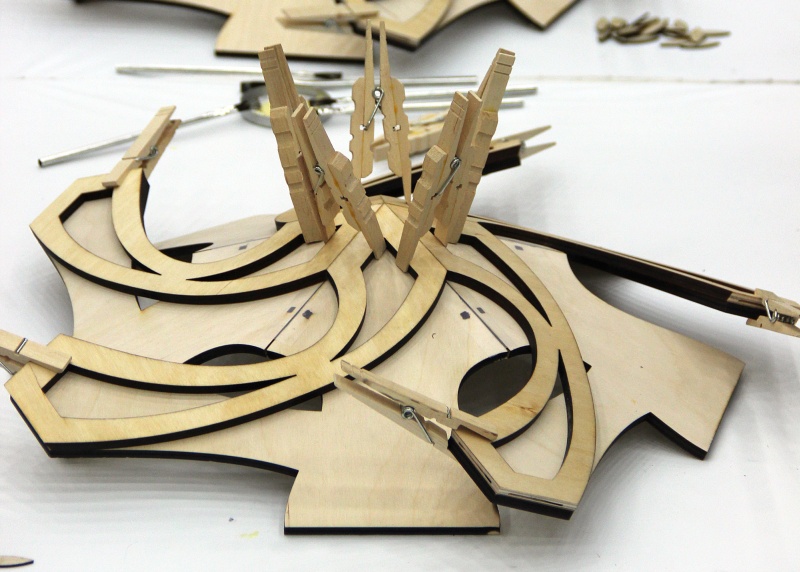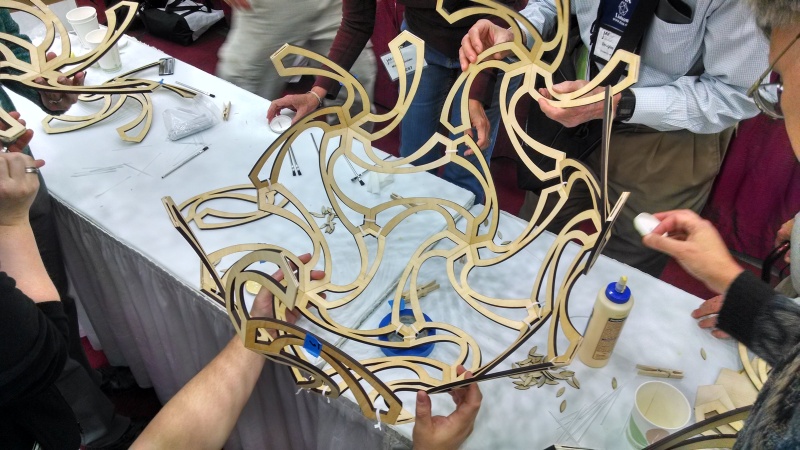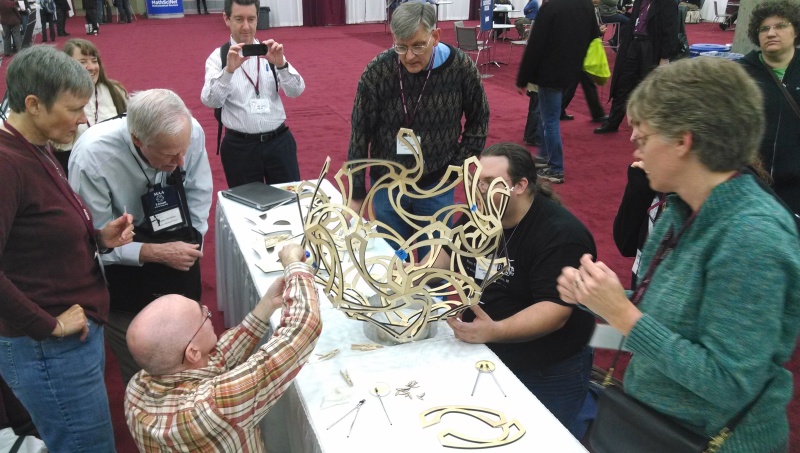I made special jigs to hold the components
in the proper relative position while the glue dries.
Everything needs to be very exactly aligned in order for the
parts to meet precisely. Specially modified clothes
pins serve as clamps. Each new group of five
participants watched the previous five to see how it works.
I prepared the parts ahead of time in my studio in New York
and brought everything with me to Baltimore. The parts
are made of 1/4" thick five-ply Baltic birch plywood that I
laser-cut to the proper shape. I beveled the mating
surfaces with a sander to create the proper dihedral
angles. And I cut small slots in the mating faces for
tiny custom "biscuits" that fit inside the ends of the
parts. The biscuits are laser-cut from 1/16" thick
aircraft plywood to keep everything aligned. They add
a great deal of strength to the structure.
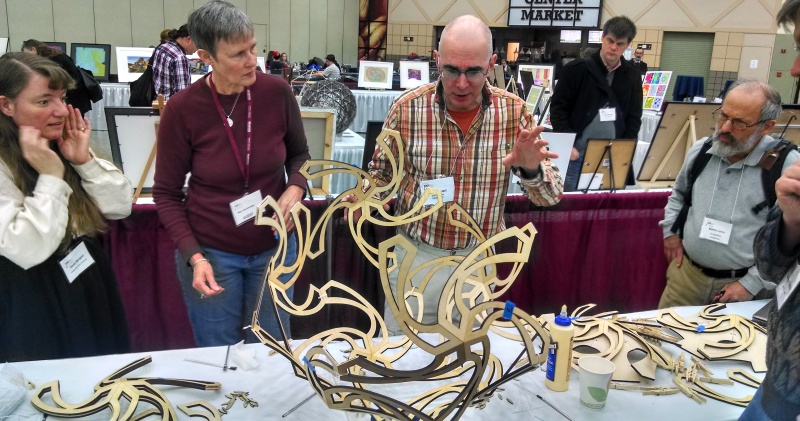
I wasn't sure how a bunch of
mathematicians would do when asked to glue biscuit
joints --- sometimes mathematicians get a reputation for
abstractness rather than practical ability --- but it
worked out great! This is the first time I tried
out the technique at a sculpture barn raising and
everyone understood it easily. So I'll certainly
use it again in future sculpture activities.
After the glue sets on the five-part modules, we take them
off the jigs and they are assembled three-to-a-vertex like a
regular dodecahedron. Plastic twist ties suffice to
hold them together while the glue dries. Many people
can work simultaneously from all sides, so everything comes
together pretty rapidly.
If a bit too much glue is applied and some oozes out, I can
clean off the extra with a razor blade. (I
pre-finished the parts with tung oil, which helps repel glue
from the surface.) But not much cleanup was needed.
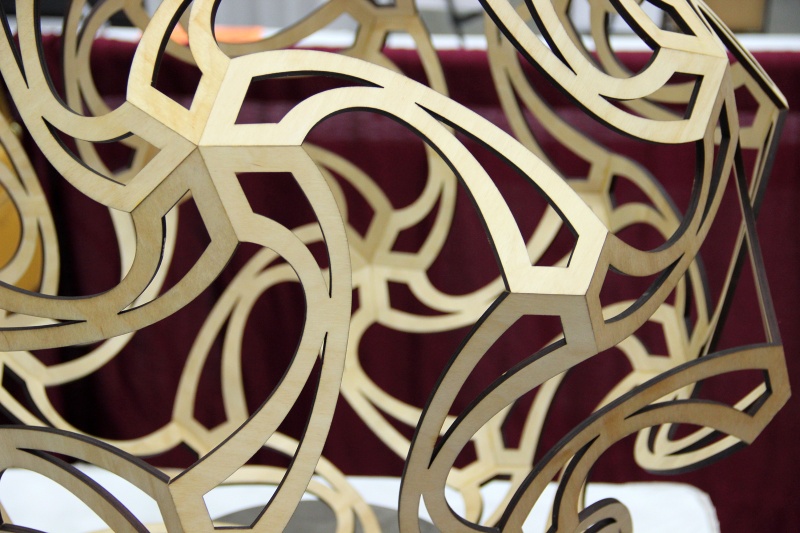
The final sculpture came out
beautifully. The joints are all neat and crisp,
the way I like them.
Whimsy is now on
display at the headquarters of the Mathematical
Association of America (MAA) in Washington DC.
Before making the 30-inch version at the JMM conference,
I made a smaller 10-inch version from cherry, partly as
practice and partly to make sure I really like the
design. It can be seen on
this page.
To learn about the mathematical
structure underlying Whimsy, see
this
video.
Thank you to everyone who participated.
Thank you to Ginda Fischer and the MAA for some of the
above photographs.
And thank you to SIGMA-ARTS/MAA and the Bridges
Organization for sponsoring this project.



